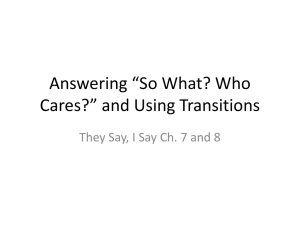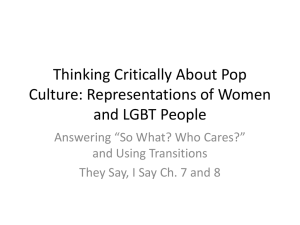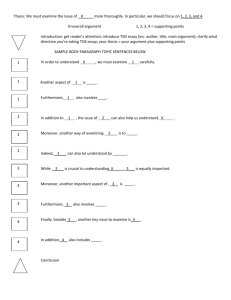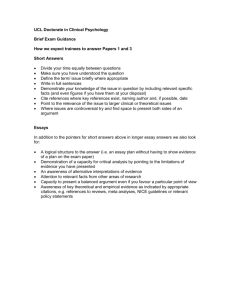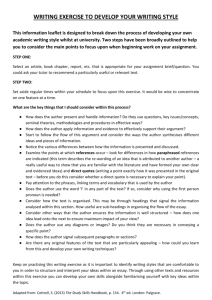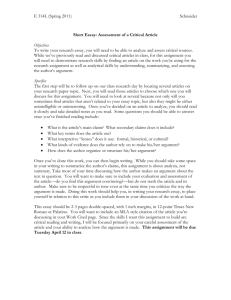Week 9
advertisement
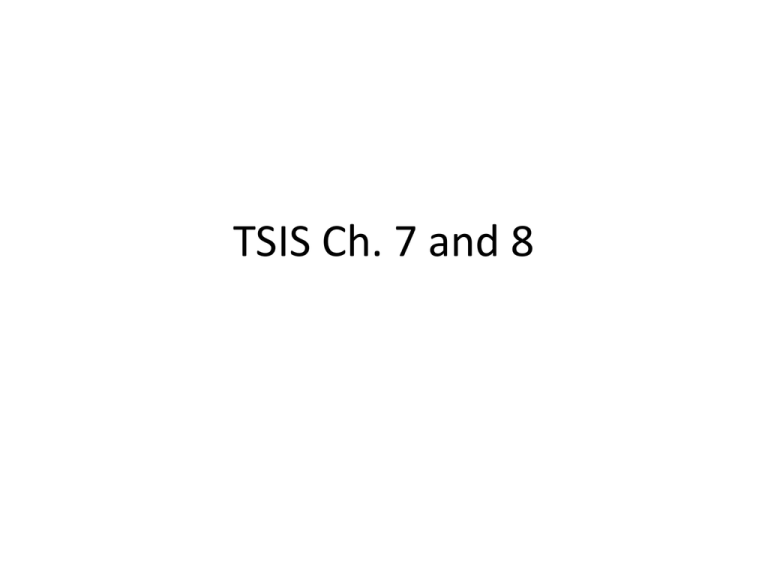
TSIS Ch. 7 and 8 TSIS Ch. 7: “Saying Why Your Argument Matters” • Chapter Seven of They Say, I Say on p. 92 encourages student writers to make clear what is at stake in their writing. Saying why your argument matters might take two possible forms: • “Who cares?” p. 93-96 – What groups or people have an interest in the argument you are making? – For example, one reason that the passage on p. 93-94 about fat cells is well written is that the author clearly indicates that scientists used to think differently about fat. This means that researchers, nutritionists, and anyone who cares about how fat work in our bodies should sit up and take notice. • People who care (or SHOULD care… see p. 96) might include… – – – – Researchers who study your issue Policy makers/govt. officials who legislate about your issue People who are directly affected by your issue and their family/friends People whose profession puts them in contact with your issue TSIS Ch. 7: “Saying Why Your Argument Matters” • “So what?” p. 96-99 – What are the real-world implications of your argument? What real situations does it affect? – Your book advises you to “link your argument to some larger matter that readers already deem important” (97). – Notice how the author of the article about fat cells establishes why the information she is sharing is important on p. 97. For Essay #2: • What groups or people have an interest in the argument you are making? – If you have not already made this clear, integrate this information into your essay 2 draft, perhaps using a template from p. 95-96 of TSIS. • What are the real-world implications of your argument? What real situations does it affect? – Integrate this information into your essay 2 draft, perhaps using the templates on p. 98-99. • Your answers to these questions should affect how you write about the issue. TSIS Chapter 8: Connecting the Parts • Transitions help you connect your sentences/ideas to what came before, and to prepare your readers for what comes after. • See Figure 6 on p. 107 for a visualization of this idea. • Other transition pointers: – Use transition words p. 109-110 within and between paragraphs, but make sure you use the appropriate words for your argument. – Use pointing words p. 112, but be sure that what you are pointing to is clear. – Repeat Key Terms and Phrases p. 114 – Repeat Yourself – but with a difference p. 116 • Our authors suggest that “after your first sentence, almost every sentence you write should refer back to previous statements in some way” (117). The trick is to do this smoothly and without becoming monotonous. For Essay #2 • What are the “parts”? What are the major topics/arguments you are going to cover? • Highlight places where you move from one topic to another, either within a paragraph or between paragraphs. Do you clearly tell your reader how your new topic is related to your thesis and/or your previous topic? • How might you connect them to each other? Use transition words (109-110) and pointing words (112) to clearly connect your thoughts. • Is there a logical order for the parts of your argument? – Are there parts of your arguments that need to be explored before your reader will be ready for other parts?
